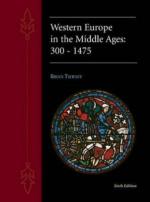|
This section contains 409 words (approx. 2 pages at 300 words per page) |

|
Circa 1123-1190
Holy Roman Emperor
Consolidation of Power. The son of Frederick II, duke of Swabia, Frederick I (Frederick Barbarossa or Frederick the Red Beard) of the Hohenstaufen dynasty was elected Holy Roman Emperor on 4 March 1152. As the king of Germany (1152-1190) and later the king of Italy (1155-1190), Frederick I constantly struggled for the predominance of the Empire over the various European monarchies and the papacy. His adoption of the term Holy Empire to describe his kingdom and steadfast opposition to the Pope made him a symbol of German unity for later generations.
Lombardy. The key to Frederick I's plan to dominate Europe was the rich region of Lombardy in northern Italy. By integrating Lombardy with his German holdings, the emperor would have the financial resources to control his German princes and build a powerful state. Eventually, Frederick I conducted six military campaigns...
|
This section contains 409 words (approx. 2 pages at 300 words per page) |

|




